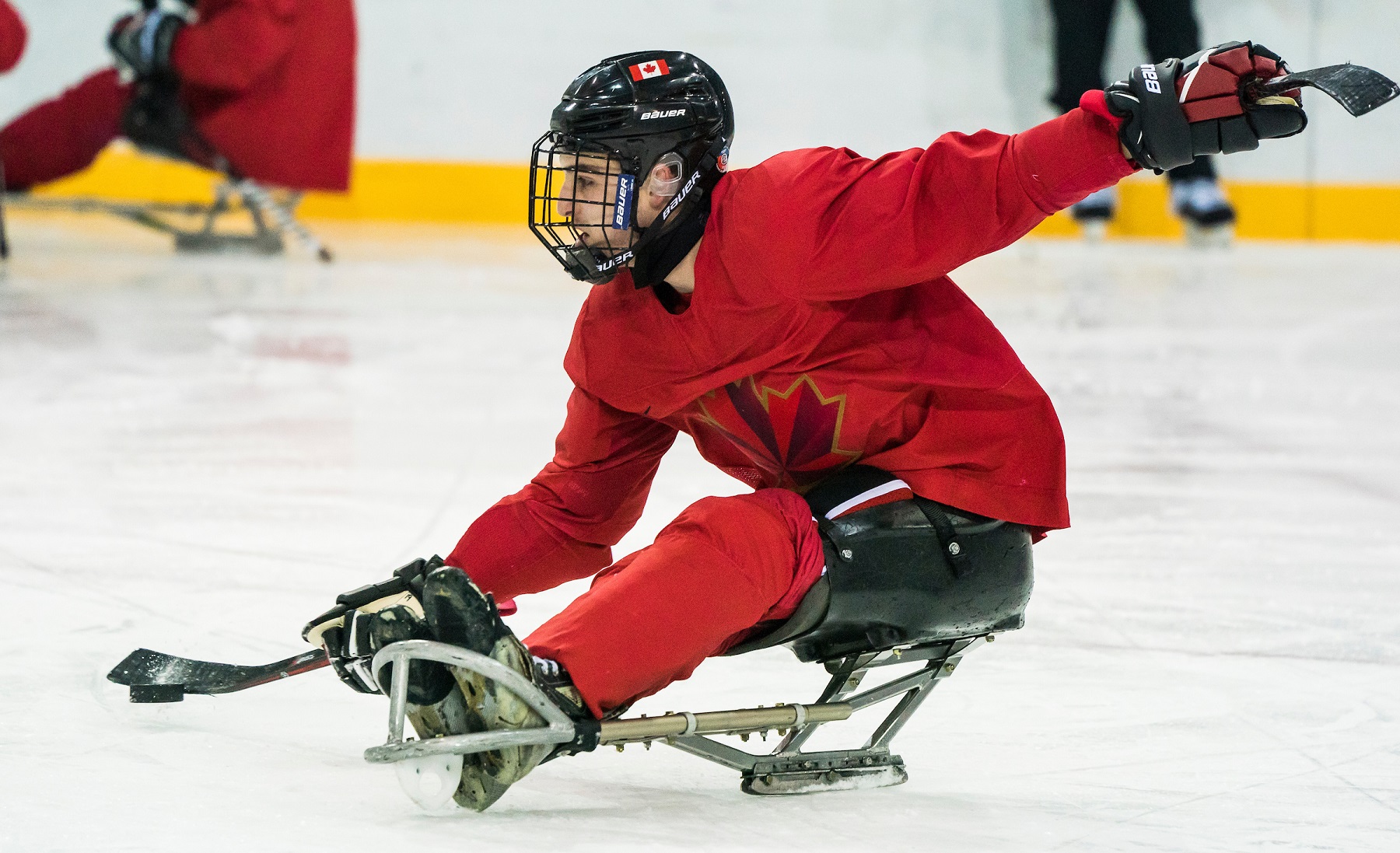Focus on Para Equipment: Trying out a Para ice hockey sled
Sleds can be adjusted to best fit the athlete based on their disability and preferences

Watching a Para ice hockey player glide across the ice in their sled, it looks easy enough.
Not so fast. One can’t simply sit in a sled, strap in, and immediately skate like a pro. What can’t be seen is how important finding the right balance is, or the sled can easily flip backwards. Or how much effort and strength is needed to move effectively at rapid speeds.
The sled is the main piece of equipment for Para ice hockey. Two skate blades are attached to the bottom of the aluminum sled, and athletes propel themselves forward with two sticks which have picks on the end.
Even Canada’s best Para ice hockey players went through a learning curve. National team members and Paralympians Dominic Cozzolino and Rob Armstrong, both runners-up at PyeongChang 2018 and gold medallists at the 2017 world championships, said it was challenging at first and it takes time to build the right muscles and skills.
“Getting in the sled the first time was a little bit tough, just learning the skills to stay balanced and turn and stop,” said 24-year-old Cozzolino, who started the sport in 2012. “I remember my first two or three ice times, I couldn’t figure out how to stop, I was just crashing into everything.”
Armstrong, who was introduced to the sport around age 10, says he is still trying to master the sport and has recently been working on tight turns. He felt at home immediately though.
“It is hard but it’s so much fun to just get that feel on the ice. Once I got in a sled, I just loved it so much, even though I couldn’t turn at the time. Just being able to glide on the ice and get that feeling again.”
There are different types of sleds, and they can be adjusted to best fit the athlete based on their disability and preferences. For example, someone with both legs would have different requirements in a sled than an amputee athlete. High quality sleds designed to a player’s specifications can reach up to $1,000 in cost.
Technology has played a significant role in the sled throughout the years.
“The sleds are definitely a lot slicker and lighter now,” said Armstrong. “I know they’re still trying to innovate more. When I first started, my first sled that I played competitively with, it was really heavy and low to the ice. Now I have a slick one, it’s one frame, it’s very impressive technology.”
With lighter sleds, the game itself has become even more fast-paced and is always evolving.
“Guys are so much faster on them now,” said Cozzolino. “Even the sticks, we went from two-piece to one-piece sticks a couple years back. The growth of the sport is super encouraging, and I can’t wait to see where it’s going to be in 2022.”
"*" indicates required fields
"*" indicates required fields